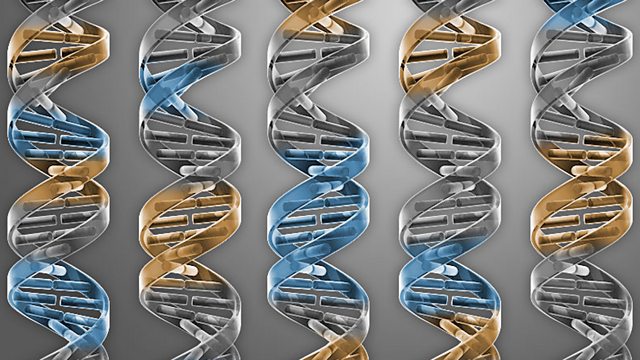
The Simplest Synthetic Life Form Yet?
The Simplest Synthetic Life Form Yet; Flood defences; Moon Used to Spin 'On Different Axis'; Red Light for Red Lights; Feeding the World; Cochlear implants; Human Brain Project
Researchers have for some years been trying to create a synthetic life form, consisting of the minimum number of genes possible. Such a life could allow them to investigate the functions of other genes, by carefully adding them onto the genome, and seeing what they do. In research published this week in the journal Science, Dr Craig Venter and colleagues announce the design and creation simplest form yet created, but surprisingly, the function of around of a third of its genes remains unknown.
Flood Defences
In Delft, the world’s biggest artificial waves are pitted against a new kind of super-strong sea wall. The Delta Flume team, led by Mark Klein Breteler, have created a giant concrete channel with a wave generator. Reporter Roland Pease turns up in time to see the team testing their artificial waves against a 10 metre dyke.
Moon Used to Spin 'On Different Axis'
The Moon used to spin on a different axis and show a slightly different face to the Earth, a new study suggests. Using data collected by Nasa's Lunar Prospector mission in the late 1990s, scientists spotted two hydrogen-rich regions near the Moon's poles, probably indicating the presence of water ice. The icy patches are opposite each other - the line between them passes through the middle of the Moon - so it appears that this used to be its spin axis. The work appears in the journal Nature.
Red Light for Red Lights
Cars are becoming increasingly wirelessly connected, with the ability to communicate with each other and the infrastructure around them. So much so, say a team of researchers at MIT in the USA that traffic lights may become an unnecessary impediment in getting through road junctions. The Science Hour talks to MIT’s Carlo Ratti.
Feeding the World
As the world’s population grows and the climate challenges our ability to grow crops, how can agriculture provide enough food? Can we get more from our current food crops for less? Scientists and farmers alike have been increasingly haunted by the environmental effects of high-intensity farming over the last half century. There is now an urgent need to be more mindful of the landscape and our finite ecological resources.
Professor Kathy Willis, science director of Kew Gardens, looks at how we can breed better-adapted and more efficient crops by exploiting the wealth of natural diversity in our so-called crop wild relatives. They are the species from which all our current crops originally evolved. Many researchers now believe that these ancient relatives hold the key to future crop improvement. She finds out how the International Rice Research Institute in the Philippines is breeding new varieties that can cope with droughts and floods at unpredictable times. Storm surges make farmland in coastal areas too salty for most crops to grow. Pathogens and pests evolve so rice varieties are losing resistance to new strains of pathogens or insects. Professor Willis meets the scientists who are reassessing our crops ancient ancestors that hold the genetic diversity that is needed to give the resilience we need to cope with the extremes of climate predicted for the coming decades.
Cochlear Implants
People with cochlear implants hear a degraded version of speech. Using subtitles helps train the brain to understand it faster. Matt Davis from the Medical Research Council’s Cognition and Brain Science Unit in Cambridge suggest that this feeds into a model of how the brain learns called Perception Learning.
Human Brain Project Platforms
The Human Brain Project is developing six information and communications technology platforms to enable large-scale collaboration, data sharing, and reconstruction of the brain at different biological scales. SpiNNaker (Spiking Neural Network Architecture) is intimately involved with the project as it attempts to build a new kind of computer that directly mimics the workings of the human brain. Gareth Mitchell talks to its key designer Professor Steve Furber.
(Image caption: Researchers have designed and synthesized a minimal bacterial genome, containing only the genes necessary for life © C. Bickel/Science 2016)
The Science Hour was presented by Gareth Mitchell with comments from ���˿��� Science reporter Jonathan Webb
Producer: Alex Mansfield
Last on
More episodes
Previous
Broadcasts
- Sat 26 Mar 2016 09:06GMT���˿��� World Service Australasia
- Sat 26 Mar 2016 23:06GMT���˿��� World Service except News Internet
- Sun 27 Mar 2016 02:06GMT���˿��� World Service Australasia
- Sun 27 Mar 2016 10:06GMT���˿��� World Service except Australasia & News Internet
- Sun 27 Mar 2016 13:06GMT���˿��� World Service Australasia
- Mon 28 Mar 2016 05:06GMT���˿��� World Service South Asia
Podcast
-
![]()
Unexpected Elements
The news you know, the science you don't

